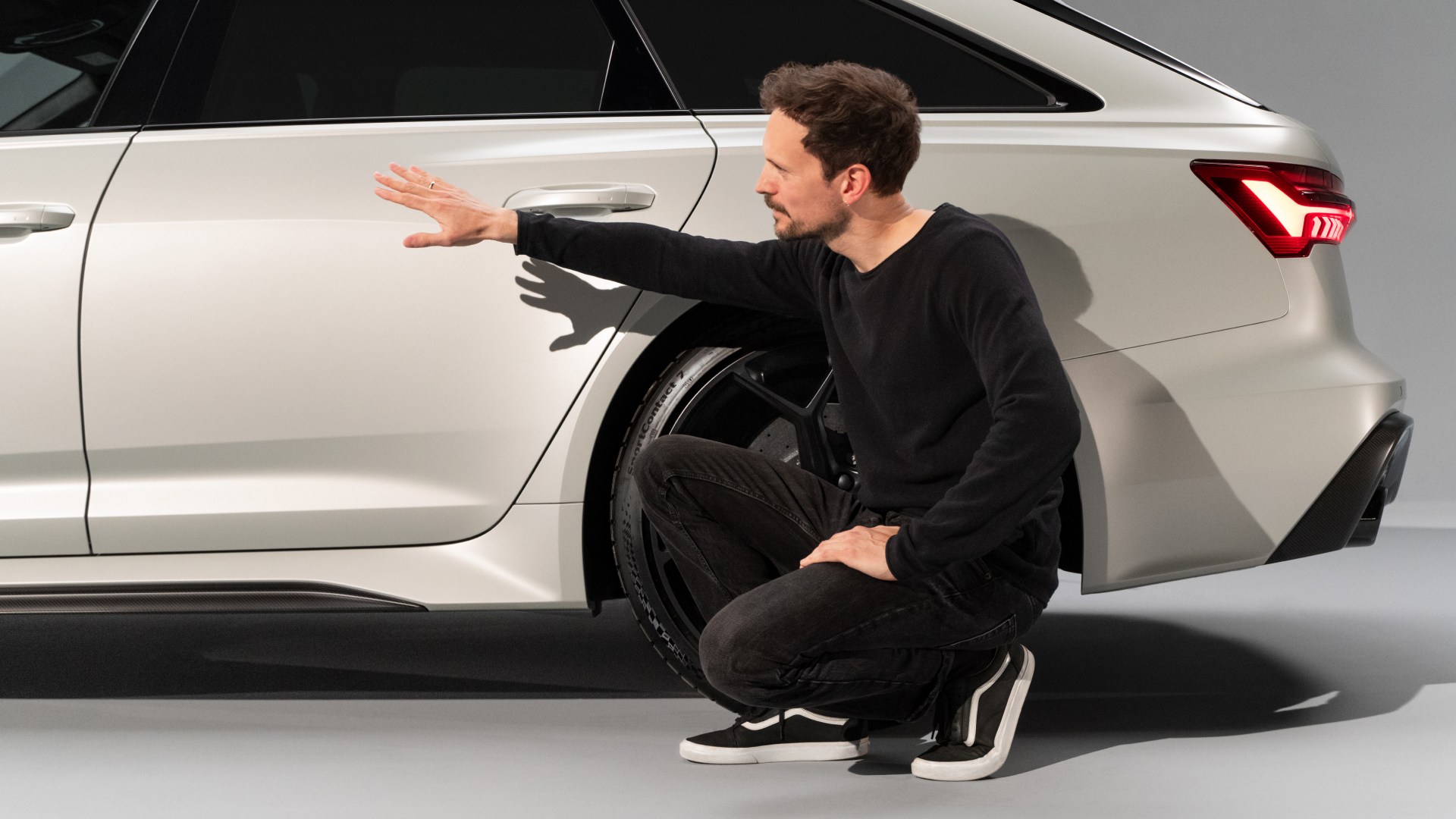Cool innovation
Innovative paintwork may play a key role in electromobility at Audi. Thanks to game-changing reflective pigments.
The vehicle shown is a concept vehicle that is not available as a production vehicle.

Together with metallic, ceramic or pearl particles, pigments not only affect how we perceive surfaces but can also provide functional benefits.
Together with metallic, ceramic or pearl particles, pigments not only affect how we perceive surfaces but can also provide functional benefits.
Along with aerodynamics and tire characteristics, among other things, paintwork could be another decisive factor in improving the range of electrically powered Audi vehicles. To understand just how that works, look no further than the paintwork on the Audi Q4 e-tron concept*. The Color & Trim designers at Audi chose a very special coating for the concept car’s body. Dubbed “Solar Sky”, the shade was developed in collaboration with BASF Coatings.

The Audi Q4 e-tron concept* in “Solar Sky”. Depending on the incidence of light, the blue tone changes. Dark color contrasts in the sill area between the axles, where the battery is located, emphasize the concept car’s affiliation with the brand’s purely electrically powered e-tron models.
The Audi Q4 e-tron concept* in “Solar Sky”. Depending on the incidence of light, the blue tone changes. Dark color contrasts in the sill area between the axles, where the battery is located, emphasize the concept car’s affiliation with the brand’s purely electrically powered e-tron models.
Pigments reflect a portion of the sun’s rays
The exterior paintwork can ensure that, even when the mercury rises, the interior doesn’t get too hot. This is possible thanks to special pigments capable of reflecting shortwave radiation within the sun’s infrared spectrum. Most materials absorb these rays, converting them into thermal energy and heating up the object. It’s precisely this effect that the special paintwork diminishes.

The metallic shade of light blue evokes clean air. Thanks to the reflective pigments responsible for the sapphire blue crystal effect, the top coat does its job well.
The metallic shade of light blue evokes clean air. Thanks to the reflective pigments responsible for the sapphire blue crystal effect, the top coat does its job well.
Since the car’s body does not heat up as much, the interior tends to be cooler. As a result, drivers and passengers can choose to reduce the use of air conditioning. When this “freed-up” energy is redirected to the car’s electric drive, the effect of the paintwork’s pigments in conjunction with limited use of the air conditioner provides not only a pleasantly cool interior but also a greater range from a single battery charge.
The future of innovative paintwork at Audi
What’s more, the innovative paint offers a glimpse of tomorrow’s electric mobility at Audi: That’s because the exterior paintwork on the Audi Q4 e-tron concept* is a foretaste of the Four Rings’ future color palette for forthcoming all-electric production models. So car buyers can look forward to more colors to choose from. Going forward, the special Audi exterior paintwork could not only serve as an innovative means of cooling down all-electric models’ interiors when the weather is hot but also broaden the scope for customization.




